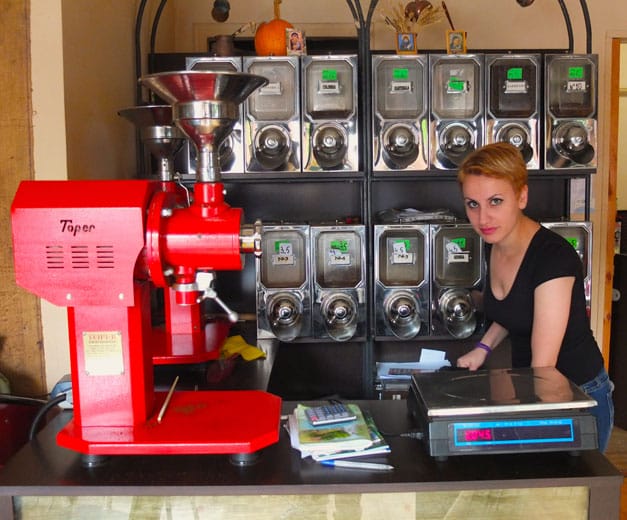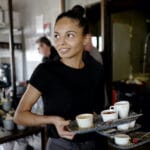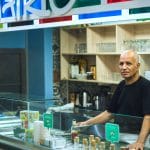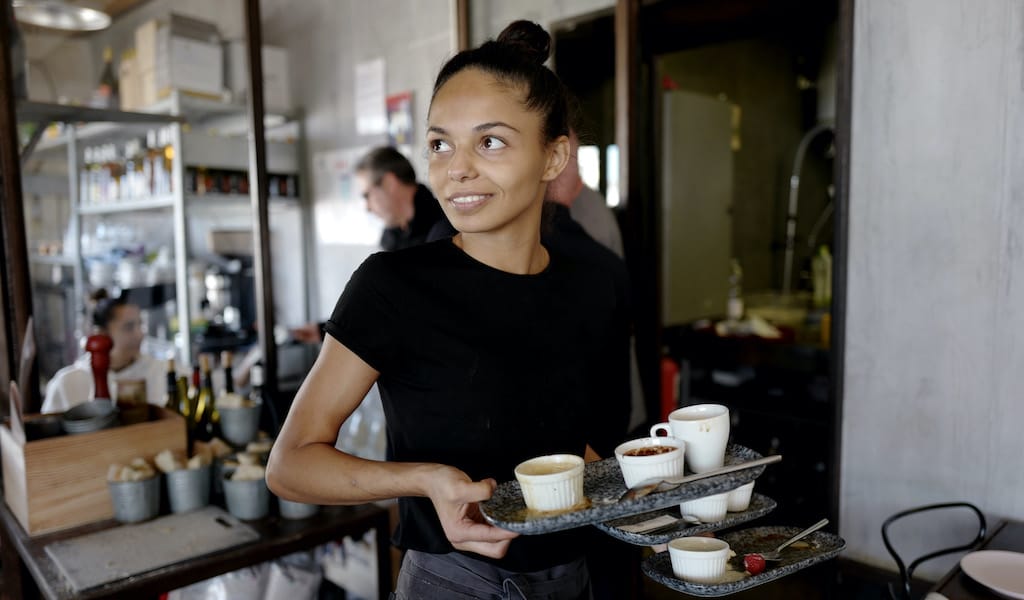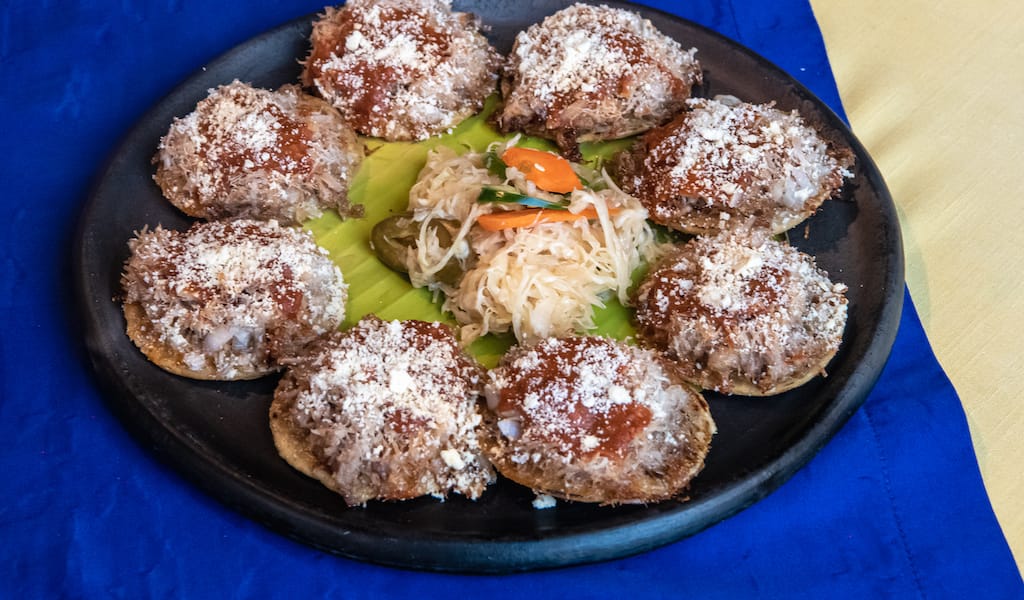With cafés popping up all over the country, from the arty boutique coffeehouses of Tbilisi to the Lavazza kiosks in villages like Zestafoni, it is easy to forget the humbler days of Georgia’s coffee culture, when an “Americano” was a chemically enhanced instant coffee powder in a stars-and-stripes-emblazoned packet added to a cup of hot water.
Before the proliferation of espresso machines, a real mug of joe meant a little porcelain cup of Turkuli – “Turkish” coffee – cooked cowboy-style by adding a heaping spoonful of ground coffee (and several spoons of sugar) to cold water and heating it in a plastic electric kettle or little copper pot on the stove. In Georgian homes, this is still the most widespread method for brewing coffee.
Like most local connoisseurs, we used to buy our coffee from our favorite bean dealer, which for us was an Armenian woman who rented a space in a nearby secondhand clothes shop and sold beans in plastic buckets labeled with such dubious monikers as Colombo, Nescafé and Pele. Knowing we liked our coffee potent but not too biting, she offered a blend of “Arabica” and “Mambo” beans, which suited us just fine.
Whenever we wanted to go the extra mile for good coffee, however, we would go to the main bazaar, next to Tbilisi’s central railway station, where another favorite dealer offered her special blend from a selection of over a dozen beans. For years, we were quite satisfied coffee junkies, meticulously brewing our Turkuli every morning, never imagining that life could get better. And then we met Ruben Avetisian, Georgia’s coffee guru.

It was late October 2010 when the 64-year-old Yerevan native cleaned out a little storefront on Perovskaya/Akhvlediani street and equipped it with a coffee-roasting machine. Soon the little strip of Irish-style pubs and Asian massage parlors was wafting in the seductive scent of roasting arabica and robusta beans, emanating from Le Cafe Du Monde. Our days of Mambo beans were part of the past.
“Oh, the beans from the bazaar are a catastrophe!” Avetisian shrieked, still drenched in sweat after a bout of roasting an hour earlier on this hot June afternoon. “Where are they roasted? I don’t know, but I think they are Indonesian beans. Cheap.”
Indonesian beans are an abomination to Avetisian. He says they smell like fish and are too wet. “There are only African beans and South American beans,” he said, switching to a heavily accented English, although he concedes that Indian Baba Budan and Nepalese beans are excellent too.
An Orientalist by profession who worked with the Armenian diaspora during Soviet times, Avetisian found himself without a job when the USSR disappeared, but he was “saved” by Valerie Gortsunian, a former associate whose family members were coffee magnates in France. She took him under her wing, teaching him the ins and outs of coffee until he decided to strike out on his own in Tbilisi, a venture that proved to be quite challenging at first.
“Georgians don’t know how to drink coffee!” he lamented. Yet his diligence and dedication to coffee are slowly paying off. He says more clients are realizing the difference between his personally hand-roasted organic beans and the mass-produced Lavazza, which most local restaurants and cafés buy. “I don’t roast quickly, like most Europeans,” he says. “I go slowly because I love the taste of the bean, not of the roast.”
Avetisian does not like selling decaffeinated coffee and prefers to offer his Number 10 blend, which he says is “light and delicate” and better to drink than chemically processed beans. For drinkers who want a kick, he recommends his espresso mix of 20 percent robusta and 80 percent arabica, or straight Ethiopia beans. But for flavor, he offers his own blends, like “Pirosmani,” named after Tbilisi’s favorite painter, for strong coffee lovers, and “Parajanov,” named after the famed Tbilisi Armenian director and artist. His personal favorite is Number 5, which he insists is a perfect balance of strength and flavor.
Recently, Avetisian slightly burned five kilos of beans, which he could have sold, but he threw it away instead. “Roasting is an art. You have to have pride in this,” he said. “It’s better to lose five kilos of burnt beans than to lose your clients.”
Editor’s note: We are sorry to report that Le Café du Monde is closed.
Published on June 12, 2015
Related stories
October 14, 2022
Marseille | By Jenine Abboushi
MarseilleLes Akolytes has the best damn seat in the house of Marseille. Akolytes’ long shaded tables, which seat over thirty people family style, is found directly across from the entry to Plage de Catalan – the first urban beach encountered when walking up from the Vieux Port. Marseille has quite a number of sea-view restaurants,…
July 19, 2019
Istanbul | By Geoffrey Ballinger
IstanbulLike many other Egyptians, when Cairo Restaurant owner Magdy Hegad talks about khushari, his eyes glisten with an emotion akin to love – but when he talks about seafood, the glisten is elevated to something closer to religious fervor. “We do it differently,” he explains. “Just try it, and you will see.” We first ventured…
December 26, 2023
OaxacaCulinarily speaking, 2023 was irreverent and loud. It tasted like salty melted cheese, fried beef, hot sauces, sour lime-flavored water, tropical fruits, and beer – lots of hoppy beer. While Oaxaca’s top restaurants kept it classy and stylish, the groovy craft beer bars, as well as the buzzing market and street food stalls told a…







































